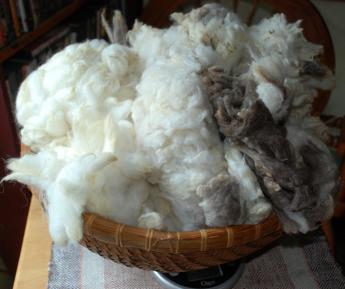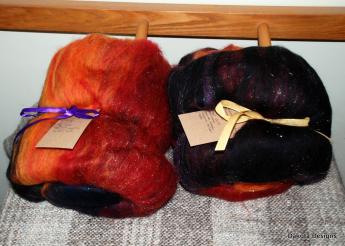I do love to spin Jacob wool.
For me, it is one of those comfort activities. Jacob just makes me feel good. A fire in the wood stove, a cup of Hot Chocolate, and some Carded Jacob is my idea of a relaxing way to spend the day! The fiber is springy, not TOO kinky, and drafts easily. It is the kind of fleece that will please the beginner, all the way through to the seasoned veteran. The yarn you get will make super outerwear, socks, shawls, and a spectacular blanket (that’s my…

